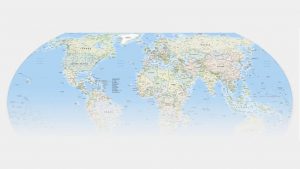Holidays as milestones on our way to environmental awareness
Sustainable development is not an exact concept; defining its meaning has been an important and ongoing element in the discussions of environmentalist thought since mid-20th century. The posts on this platform aim to enrich this discourse with practical, lived examples, where the development of knowledge is not about thinking smarter ideas, but about raising our awareness of our everyday actions.
The act of measuring is usually considered to be a quantitative method, distinct from qualitative ones. There is hardly any other measurement method than time-measurement where the lively cultural diversity make it so apparent that the applied reference points and yardsticks actually reflect quality – the values of a community on which it bases its prosperity and measures the effectiveness of its functioning. The motivation for calendar making was to accurately mark the turning points at which the quality of time changed. The holidays were intended to make these transitions, which were challenging for the physical and mental construction of the human being, as smooth as possible through the wisdom and experience of the spiritual leaders of the communities. The daily tasks and rituals they prescribed closed the period that was coming to an end and attuned the communities to the new cycle that was about to begin, thus guaranteeing their success and the realisation of their potential close to the ideal.
Environmental consciousness as an approach broadly refers to this state of balance with our environment, which requires unremitting attention and effort that in turn determines our daily choices – which nowadays we carry out with little spiritual guidance described above. At the same time, we consider the main achievement of our civilisation to be our ability to transcend our natural limits thanks to our scientific and technological expertise, which has resulted in an unprecedented level of comfort and material abundance in developed countries. The Sustainable Development Goals also see progress in solving the environmental, economic, and social problems of the Global South as essentially the introduction of technological innovations born of the ingenuity of the human mind.
At the same time, all the landmark sustainability research – The Limits to Growth, the Brandt Report, Our Common Future, etc. – defines the direction of development for the Global North in the spiritual rise of the individual. This puts our intellect in the difficult position of both celebrating its omnipotence while expecting it to accept the existence of something nobler and more sublime than itself, and to have the most urgent ambition of some kind of identification with it. The following blog posts will present the spiritual struggles of an individual of average abilities as she seeks to accomplish this task by invoking the wisdom that underlie the holidays.
In our culture early spring is a time for fasting, with unpredictable weather, when the fact of change is felt by all at some level. Officially, March 1 is the first day of the meteorological spring; the vernal equinox falls between 19 and 21 March and is noted as the beginning of the astronomical spring. We celebrate Easter on the Sunday after the first full moon that follows the vernal equinox. Although the Gregorian calendar is globally accepted, it probably does not determine the outlook of those cultures where their own calendar is still in use. Two of these cultures with significant populations, Hindu and Muslim, have calendars that mark the vernal equinox as the beginning of a year, and whose epochs does not correspond with that of the Common Era, thus neither does the year they write match our year of 2024.
In Muslim countries the event of Muhammad’s migration from Mecca to Medina and the consequent establishment of the first Muslim community marks the beginning of the era, commemorated as the Hijrah. Besides the commonly used lunar calendar, according to which the current Muslim year is 1445, in countries where the Iranian-Persian traditions prevail, a solar calendar is used with the vernal equinox – the 19th of March this year – marking the beginning of the year 1403, celebrated under the name of Nowruz which is part of a 13-day celebration, like our 12-day Christmas holidays.
In Hindu countries, the commonly used Shaka calendar is 78 years “behind” ours. According to Hindu philosophies time is cyclical; a thousand revolution of 4 consequent epochs (yugas) make up one era, the so called kalpa. One kalpa is one day of Brahma, the creator, which equals 4.32 billion years in terrestrial time. This is followed by the great deluge of equal duration. During this Brahmapralaya, the one night of Brahma, in Brahma’s dream, all beings dissolve and reunite with the Creator before creation and a new era starts again. The mythological descriptions of these epochal shifts resemble the pessimistic versions of our climate change scenarios: the Great Deluge puts out the fires that flare up after a century of drought following the depletion of the earth’s resources, the drying up of our waters, the cessation of all life forms and the scorching of our planet. Out of the thousand-fold repeating four yugas currently we are at the dawn of the fourth and most corrupted age the Kali-yuga, which began with the death of Krishna (the eighth avatar of the god of sustenance, Vishnu) in 3102 BC and will end in 428899 BC; and we are at the fifty-first of the thousand repetitions of the yugas.
For the mind trained on linearity, all this is alien and difficult to follow even though when sequencing, we have imposed a sense of linearity to the units of Hindu time measurement. In their original contexts these units structure themselves circularly and vary in scale as well as in their material-spiritual nature, which opens the door to further associations and variations. The concept of pralaya/deluge can be compared to our ecological concept of entropy where all beings decay and are reborn as a result of the continuous degradation of energy; it is no coincidence that time scales of billions of years on an earthly scale are only a blink of an eye on other scales, but the process itself is happening with us, within us, and therefore we can learn about the workings of the world not only theoretically, but also through direct experience.
Hindu thought aims to define principles and to train the mind to recognise their operation in everything – without judgement. One of the most important elements of sustainability philosophy is the preservation of diversity, yet on an intellectual level it is difficult to avoid sustainability becoming unwelcoming to different modes of thinking. It is apparent from the above that even a category so seemingly absolute as time-computing is not uniform, and as human history teaches us, all attempts at uniformization are doomed to failure. The realisation of the ideal of humanity prospering within the limits of the planet’s carrying capacity is indeed the greatest challenge of our time, where the most difficult question to be answered is the seemingly trivial one of exactly which direction to direct our intellectual energies.
Photo credit: the author






